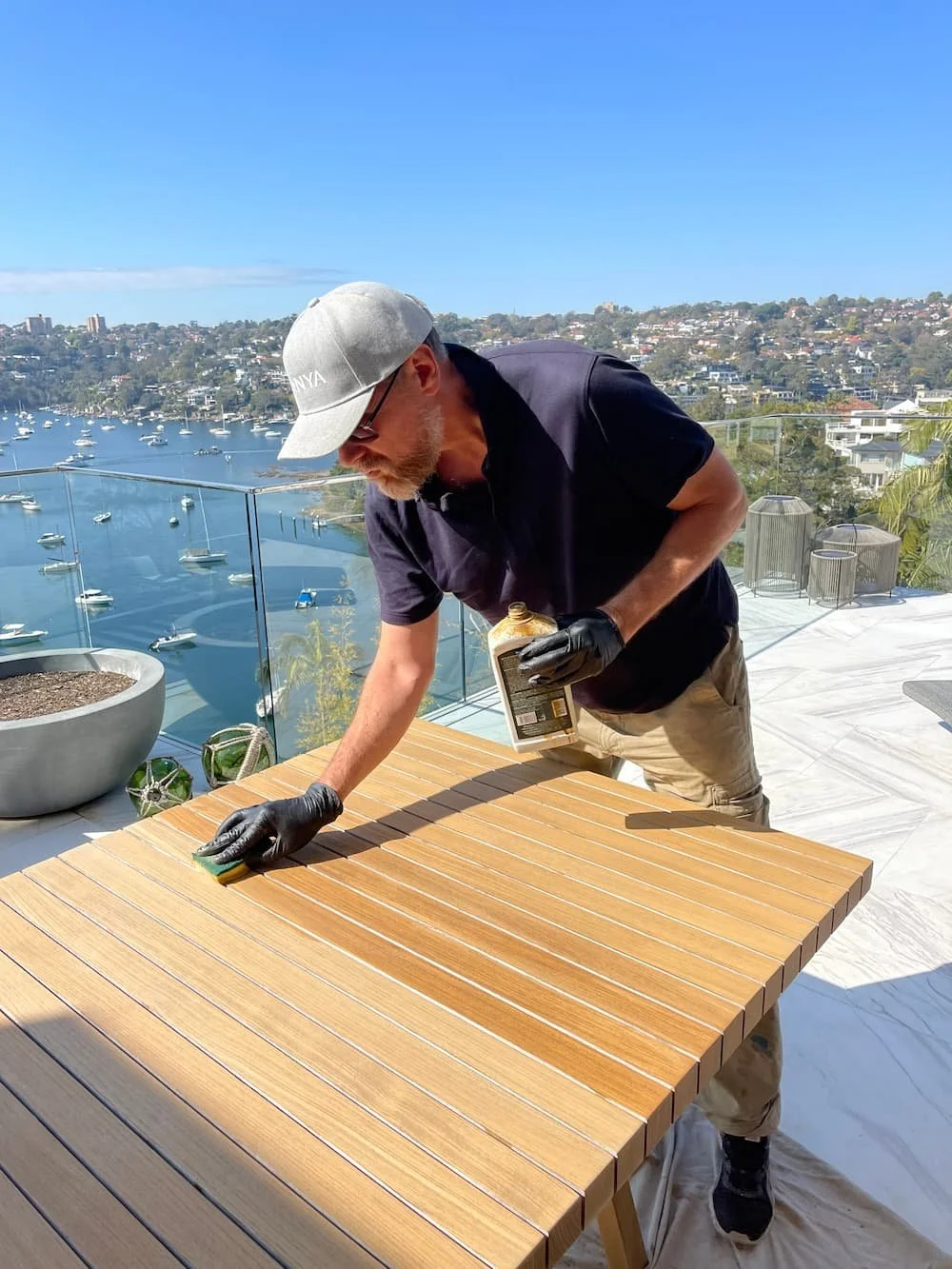Why Water-Based Stains Are the Smarter, Safer Choice for Modern Finishes
When it comes to restoring or finishing timber — whether it’s a beloved dining table or a high-end joinery piece — the type of stain you choose matters more than you might think. In a world increasingly shifting toward sustainability and health-conscious choices, water-based stains are leading the charge. Here’s why they’re not just better for your furniture, but also for your health, your home, and the planet.
🌱 1. Safer for You and Your Family
Traditional oil-based stains contain high levels of VOCs (volatile organic compounds) — harmful chemicals that evaporate into the air as the product dries. These VOCs can:
Irritate the eyes, nose, and throat
Trigger asthma or respiratory issues
Contribute to indoor air pollution
In contrast, water-based stains have low or zero VOCs, making them a healthier choice, especially for indoor use, family homes, and sensitive individuals.
🌿 2. Eco-Friendly and Sustainable
Water-based products are far less damaging to the environment:
They use water as a solvent instead of petroleum-based chemicals
They produce less air pollution
Clean-up requires only soap and water — no turpentine or solvents
For a planet-conscious brand or household, this matters. At Förnya, we believe sustainability and style can — and should — go hand in hand.
🎨 3. Natural Look, Better Color Control
Scandinavian design is all about light, natural tones and clean finishes — and water-based stains excel here. Why?
They dry true to color, meaning what you see is what you get
The finish is more transparent, allowing the natural beauty and grain of the wood to shine through
You can layer for intensity or apply thinly for a subtle, minimalist look
This makes water-based stains ideal for custom tones like Scandi Grey, Natural Blonde, or Charred Black, which Förnya expertly blends.
⏱️ 4. Faster Drying Time
Water-based stains dry much faster than oil-based ones — typically within an hour or two, versus up to 24 hours with oil-based options. This allows:
Faster project turnaround
Multiple coats in one day
Less exposure to airborne particles during application
Time efficiency is not just a convenience — it’s a business advantage and a lifestyle win.
💪 5. Durable with the Right Sealer
Some still think water-based finishes are less durable — but this is outdated. Today’s professional-grade water-based stains, when sealed with high-quality topcoats, are just as durable as oil-based finishes:
Resistant to wear and UV fading
Easier to maintain over time
Less likely to yellow or darken with age
Förnya’s protective topcoats are specifically chosen to pair with water-based stains for maximum performance and longevity.
✨ 6. No Lingering Smell
Nobody wants their home or workshop to reek of chemicals for days. Water-based stains have a milder odour that dissipates quickly, making them ideal for:
Interior spaces
Families with kids or pets
Commercial fit-outs where fast turnaround and low disruption are key
🔧 7. Easier Cleanup
Forget harsh solvents — water-based stains clean up easily with just water and a cloth. That means:
Less mess
Safer for your skin and lungs
Better for the environment
In Summary:
FeatureWater-Based StainOil-Based StainVOC EmissionsLow/NoneHighDrying Time1–2 hours6–24 hoursOdourMildStrongColour AccuracyHigh (dries true)May darken/yellowCleanupWaterSolvents requiredEco-FriendlinessHighLowFinish LookNatural/MatteGlossy/Warm
Final Thoughts
At Förnya, we choose water-based stains not just for how beautifully they perform — but because we believe in creating timeless finishes that are safer, cleaner, and more sustainable. Whether you’re restoring a family heirloom or refreshing your interiors, our Scandi-inspired range delivers style with integrity.
Have a piece in mind? Let us bring it back to life — the modern way.


